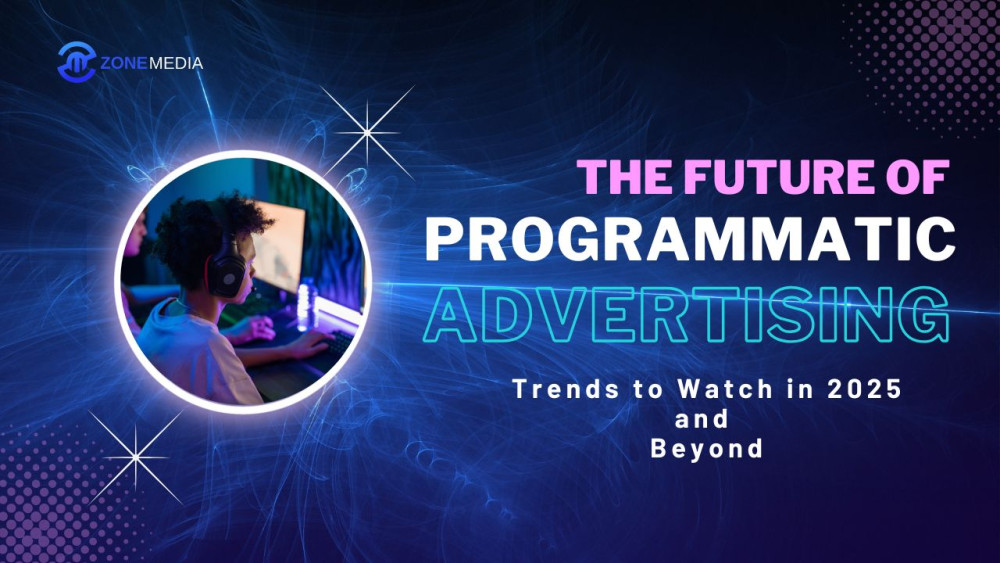It wasn’t too long ago that advertisers had to negotiate ad placements over long lunches and handshake deals. Fast forward to today, and artificial intelligence (AI) makes those decisions in milliseconds. This is the power of programmatic advertising, a game-changing approach that automates ad buying and optimizes targeting with real-time data. But what’s next? As we head into 2025 and beyond, programmatic advertising is set to evolve at an even faster pace, driven by new technology, regulations, and shifting consumer behaviors.
The Evolution of Programmatic Advertising
To understand where we’re headed, we need to look at where we’ve been. Programmatic advertising started as a revolutionary method to automate media buying, replacing manual negotiations with real-time bidding (RTB). Over the years, advancements in AI, machine learning, and big data have refined targeting, personalization, and campaign efficiency. Now, the industry faces new challenges and opportunities, with privacy laws tightening, new channels emerging, and consumers demanding more relevant and non-intrusive ads.
So, what does the future hold for programmatic advertising? Here are the key trends to watch.
1. The Cookieless Future and Privacy-First Advertising
For years, programmatic advertisers relied on third-party cookies to track users and deliver personalized ads. But with Google set to phase out cookies on Chrome and privacy laws like GDPR and CCPA becoming stricter, the industry is undergoing a major shift.
What’s Next?
First-party data strategies: Brands are now focusing on gathering data directly from their customers through websites, apps, and loyalty programs.
Contextual targeting resurgence: Rather than tracking users, advertisers are shifting to context-driven ads that appear based on webpage content.
Unified ID solutions: Companies are developing alternatives to cookies, such as universal identifiers that allow anonymous tracking across multiple platforms while maintaining privacy compliance.
2. AI and Machine Learning: The New Brain of Programmatic
AI-driven automation has already transformed programmatic advertising, but its role is set to become even more sophisticated. In the future, AI will do more than just optimize bids—it will predict user behavior, automate creative production, and enhance dynamic personalization.
What’s Next?
Predictive analytics: AI will analyze historical data to predict which users are most likely to convert and adjust bids accordingly.
Automated creative optimization: AI-generated ad creatives will dynamically adapt to different audiences in real-time.
Voice and visual recognition: Programmatic ads will integrate voice search data and even identify objects in images and videos to create ultra-relevant campaigns.
3. Connected TV (CTV) and Digital Out-of-Home (DOOH) Advertising
Consumers are spending more time streaming content on Connected TV (CTV) platforms like Netflix, Hulu, and YouTube TV. Additionally, Digital Out-of-Home (DOOH) advertising, such as digital billboards and transit screens, is becoming a major player in programmatic media buying.
What’s Next?
CTV ad spending will skyrocket, as advertisers shift budgets from traditional TV to digital streaming platforms.
Programmatic DOOH will enable real-time bidding for digital billboards, ensuring brands display their ads in high-traffic locations at optimal times.
Omnichannel strategies will connect CTV, mobile, desktop, and even real-world digital screens to create seamless advertising experiences.
4. 5G and Real-Time Ad Delivery
The global rollout of 5G networks is set to supercharge programmatic advertising by enabling faster data processing and ultra-low latency.
What’s Next?
Instantaneous real-time bidding (RTB) will improve ad delivery speed and accuracy.
Higher-quality video ads will load faster, reducing buffering and improving user experience.
Augmented Reality (AR) and Virtual Reality (VR) ads will become more interactive and immersive, enhancing engagement.
5. Ethical Advertising and Sustainability
Consumers are becoming more aware of ethical advertising practices and expect brands to prioritize sustainability, diversity, and responsible data usage.
What’s Next?
Carbon-neutral advertising: Brands will adopt eco-friendly programmatic ad solutions that reduce energy consumption.
Ad transparency: Users will have more control over the data they share, and brands will need to be more upfront about how they use consumer information.
Ethical AI usage: AI bias and misinformation will be key concerns, prompting stricter guidelines for responsible AI-driven advertising.
The Bottom Line: Programmatic Advertising is Just Getting Started
The next phase of programmatic advertising isn’t just about automation—it’s about privacy-first personalization, AI-driven efficiency, and cross-channel engagement. Brands that embrace these trends early will have a significant advantage in reaching the right audience with the right message at the right time.


